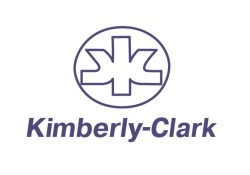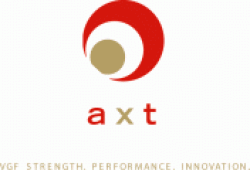It's not every day that mining companies make the news here, and that's because investors are often better off ignoring them. But Barrick Gold (NYSE:GOLD) and Newmont Mining (NYSE:NEM) have been tying up in a big way, creating something to the tune of a $30 billion joint venture in the gold space.
In this episode of MarketFoolery, host Chris Hill talks with Motley Fool Canada's Taylor Muckerman about the deal, and about what investors should know about investing in mining companies. They also discuss the tragedy of yet another crash of a 737 MAX 8 from Boeing (NYSE:BA) that killed hundreds of people: What it means for Boeing, companies that buy from Boeing, and anyone who has to fly in the near future.
A full transcript follows the video.
This video was recorded on March 11, 2019.
Chris Hill: It's Monday, March 11th. Welcome to MarketFoolery! I'm Chris Hill. Joining me in studio today, from Motley Fool Canada, Taylor Muckerman. Good to see you!
Taylor Muckerman: You, too! It's been a little while.
Hill: It has been a little while. There's a story we're going to get to in a minute that, when I saw it a week or two ago, that's when I reached out to you, like, "I have to get you in the studio." It didn't work out timing-wise for you. I'm glad, because it's even a timelier story now.
Muckerman: It changed course a little bit since then.
Hill: It did. It's a big deal in the mining industry. We're going to get to that. We're going to get to the future of baseball.
We have to start with the story of the day. For the second time in six months, a Boeing aircraft is involved in a deadly crash. It is the same model of aircraft, the 737 MAX 8. On Sunday, an Ethiopian Airlines flight crashed shortly after takeoff, killing all 157 people on board. Last fall, a Lion Air Flight crashed into the Java Sea off of Indonesia, killing all 189 people involved. Shares of Boeing are down 8% this morning. The stock drop obviously pales in comparison to the loss of hundreds of lives, and our hearts go out to all of the victims and their families. I'm surprised the stock isn't down more, only in this regard -- we're talking about the 737 MAX 8, which is the latest and greatest model of their best-selling plane.
Muckerman: Let's say "greatest," with air-quotes.
Hill: Yeah, "greatest." The latest version of their best-selling plane. Two accidents that appear to have very similar circumstances around them. If you own an airline and you've got some of these in your fleet, aren't you parking them on the tarmac for a while?
Muckerman: Yes. China supposedly has around 75 of the 350 of these jets that are operational worldwide. They've grounded all of them. No more flights using these in China, in or out. For U.S. airlines, Southwest has the most in their fleet at 34. American Airlines has 24. Air Canada has 24. United has 14. But in all the world, Southwest has the most on order at nearly 300 of these. I don't think they've grounded any flights. Southwest and American airlines... or, U.S. airlines ... I guess I can't say that either. Domestic airlines have come out with statements saying that they feel confident in the safety of these jets.
But, you're right. Two times in six months. The first time, I don't remember what the stock did. But, yeah, I'm surprised it's down not more than 8% today because now it appears that there is an issue. It wasn't just a one-off instance. It's basically coming from a new feature on these jets that prevents them from stalling out. If the nose starts to climb too drastically, it starts to level the plane out a little bit more. Apparently, it malfunctioned and the pilots could not overcome that, so it put the plane into a nosedive rather than just correcting climbing too quickly.
Hill: I saw a report a couple of hours ago on CNBC that the data recorder had been recovered. Presumably, at some point, we will learn more and get the audio from that. What do you think is the move here from Boeing? They put out a statement earlier this morning that I thought missed the mark a little bit. I'm not saying it was an insensitive statement, but it struck me as a statement that made me think Boeing itself has people inside the company who are saying, "Wait a second, before we go out with a strong defense of our technology, let's hit the pause button because we may, in fact, have some problems here."
Muckerman: I think hitting the pause button is the right move, total crisis management right now. When I was reading about this -- I think I mentioned to you that the trigger in my head flipped, and it reminded me of the BP Gulf of Mexico disaster. That company, the executives were aware of things that were happening, cost-cutting that led to that. And then government regulators and inspectors weren't aware of all the issues going on, didn't have the staffing necessary. I don't know if the FAA has anything to say about this. But, Boeing, definitely in crisis management.
Apparently, airlines have been saying that they weren't properly notified of this new feature on this jet. Boeing says that claim isn't true. There's some back-and-forth there. Pilots might not even have known that this feature existed on these new jets. If that's the case, I think Boeing's in a world of hurt.
Hill: For anyone who is thinking, "Well, this is an Ethiopian Airlines flight, the other one was in Indonesia, this is halfway around the world," make no mistake, the FAA and the National Transportation Safety Board are both investigating this. This is a story that will continue to unfold. We'll see where it goes from here.
The story that made me think of you a couple of weeks ago, in the past couple of weeks, Barrick Gold made a hostile takeover bid for Newmont Mining. That bid was rejected. Lo and behold, this morning, I wake up to see that Barrick Gold is announcing, "Hey, we've got a joint venture." Combined, this is a $30 billion entity -- $30 billion worth of gold. A couple of questions. Let's start with, how is the joint venture structured in such a way that made Newmont Mining open to this? Because they clearly weren't open to the takeover bid.
Muckerman: No, they weren't. Apparently, these companies, the management teams haven't gotten along for a long, long time. So it was interesting to see them want to take them over anyways. Maybe they just wanted to figure out a way to can all the management at Newmont and have the last word in that argument.
What they're doing here is, they're only creating a joint venture with their Nevada assets. There's a lot of overlap there between these two companies. Everything else about these companies will remain separate, other than this joint venture with just Nevada properties. They're looking at some pre-tax savings around $500 million a year for the first five years. They even see savings out to 20 years. Definitely some overlap there between these two businesses with Barrick Gold owning 61.5%, Newmont Mining owning the remaining 38.5%. And that's just based on a pretty rough split of the assets that they'll be combining here. It's basically all based on geography, the proximity of all their mines in Nevada. Now, supposedly creating a ton of savings. And, this allows Newmont Mining to continue with its purchase of Goldcorp, which will create the largest gold company in the world.
Hill: For someone like me, who does not have any exposure to gold whatsoever, I have to be honest, part of this story for me, seeing this resulting entity, makes me go: "Wait a minute! If I'm going to dip my toe in the water of gold investing, this seems like it could be a good first step." Because as you said, this is going to be a huge entity. It seems like one of those industries where bigger is better. So, for someone like me, who's never invested in gold, do you think this is a good first step? Or is there a better way to go?
Muckerman: It certainly could be a good first step. When you look at these large miners, traditionally, they're not the best investments to hold long term. They're very cyclical, with the price of gold and silver rising and falling. And these mines are not cheap. Capital expenditures are significantly higher than most other industries. I do caution investing in the miners of this. But, certainly, cost savings is the name of the game here with this joint venture, and the Newmont purchase of Goldcorp. If you can lower the cost basis, that's all the better. And it's not easy to do. This joint venture might really give investors an attractive entry point to either of these companies.
One unique play that we like in Stock Advisor Canada is Wheaton Precious Metals, formerly Silver Wheaton. They've now become more ingrained in gold and a little bit of cobalt as well. They're a streaming model. They don't actually do any mining, they just purchase gold, silver, and cobalt streams off of miners that don't focus on those metals. You're thinking of iron ore miners, copper miners, that really have nothing to do with the gold they happen to find. That's a unique business model that keeps costs really low and stable all-in cost. If you're looking to get some exposure, that's one company that we like to recommend investors to look at.
Hill: I know I'm focusing on the wrong thing here, but I'm struck by your statement that they don't know what to do with the gold that they find. [laughs]
Muckerman: It's true. It's not their forte. It's just kind of a by-product of mining for copper and iron and all that. It's not enough for them to open up operations, so Silver Wheaton sometimes, what they do is they provide financing at attractive levels. Lately, with low interest rates, it hasn't been as an attractive business for these miners, but they do help smaller miners out quite a bit by providing financing and then just taking, as payment for that financing, the streams of gold, silver, and now lately, cobalt to a small degree.
Hill: Back to the joint venture for a second. Newmont Mining, Barrick Gold, you would hope that they're able to make these synergies work, because you look at both of these stocks over the last few years, and it really does go to something that you had touched on. You said, you don't really want to hold these for the long term. There have been various points in time over the last few years where you would absolutely want to be owners of either one of the companies, but over the five years in general, you'd be better off with an index fund.
Muckerman: Yeah. If you're trying to invest like The Motley Fool suggests, being able to sleep comfortably at night and just set it and forget it with a lot of the companies that we like to recommend, these are not those kind of companies. Declining sales most years, for at least Barrick Gold, as I looked over the last five or six years, and cash from operations. Goes back and forth if it's able to supply enough for capex. It just waffles back and forth. Far less certainty with these businesses in terms of the amount of gold they're able to sell just based on the price fluctuations.
Hill: Major League Baseball is, of course, the biggest professional league in the sport, but the future of pro baseball is not being played in the Major Leagues. It's being played this year in the Atlantic League, which is an independent professional league. Among the changes that are being tested in the Atlantic League this season: a greater distance between the pitcher's mound and the home plate, and my personal favorite, robot umpires. They're going to be using a radar system to help umpires call balls and strikes. I love this! I think anyone who watches baseball on TV probably loves this and is rooting for this.
Muckerman: My gut reaction is to be a big fan of the robot umps. Of course, a robot ump could go against me one day and then I'll hate it. But I like the certainty. You sit there and watch a baseball game, and you just see how bad some of these home plate umps can be on balls and strike calls on a pretty consistent basis. I do like that each pitcher will be treated the same. Catcher framing won't really come into play. Moving the mound back a little bit, that doesn't sit very well with me, and I'm sure it doesn't sit very well with pitchers that will have to change up their entire outlook and approach to the game. Fastball, sure, they're going pretty straight. But curveball, sliders, that all moves based on the distance that they've been pitching for most of their lives. I'm a little confused by that. You want to reduce strikeouts, get a little bit more action, maybe introduce the DH to the NL, help out a little bit there.
Hill: Let's see how all of this sits with our man behind the glass, Dan Boyd, who is one of the biggest baseball fans I know. Dan, can I interest you in robot umpires?
Dan Boyd: You certainly can, Chris. I think that's a great idea! Quick numbers for you, though. Umpires in Major League Baseball have a 93% correct rate on strike calls.
Muckerman: That's pretty solid!
Boyd: It's surprising, but it really shouldn't be. They're very, very good at what they do. I think that the robot umpire, robot strike zone or whatever, is a very good idea. I enjoy when things are correct in sports I enjoy. And here's a hot take for you, Chris: the rest of these rule changes are extremely stupid. They're awful and stupid, and most of them are built to do two very dumb things: one, increase the pace of the game. Rob Manfred, who is the current baseball commissioner, and a noted idiot, is obsessed with the idea that baseball is too slow. That's not true. It's come down since its ridiculously long games in the 1990s that a lot of people remember, to something that is a lot more reasonable. What he's doing is, he's risking the quality of baseball with these cockamamie ideas to speed up the game, which will dilute the game, and in my opinion, make it a whole lot worse.
Let me just read through these real quick because they're real dumb. No players or coaches will be allowed to visit the mound unless a pitching change is being made. No catchers talking to the pitchers during an outing. No shortstop coming in telling the pitcher what the defensive situation is going to be for a batter. Can't do it. Pitchers will be required to face a minimum of three batters. Why have strategy in baseball? That's a terrible idea! We hate strategy! Defensive shifts will be limited. Again, why have strategy? That's, it's, we -- whatever, it doesn't matter. Why? Why? Why do it? Why make it interesting? Time between innings will be increased, whatever, that's not a big one. Distance of the pitcher's rubber to home base increased by two feet. Why?
Hill: I was going to --
Muckerman: More Tommy John surgery.
Boyd: Exactly. Pitchers throwing harder, pitchers blowing their arms out more, to try to get the ball over home plate. And these are guys that have come up their entire developmental life pitching 60 feet, 6 inches. And baseball is a game of, not even inches, of millimeters. You've got these guys that have been doing this one thing for a long time. It's going to hurt pitchers!
Hill: Is the rationale --
Boyd: Wait, there's one more!
Muckerman: [laughs] The hot takes keep on coming!
Boyd: This is the dumbest one, and I don't understand why, but all of the infield bases -- first, second, third -- will be increased in size from, it's 15 square inches now, to 18 square inches. Why? What's the point of that one?
Hill: I'm assuming -- and I was not aware of that last one -- that one, combined with increasing the distance between the pitcher's mound and home plate, I'm assuming both of those things are an attempt to increase the advantage for the team that's batting.
Boyd: Yeah, I think MLB has a problem with the proliferation of strikeouts in recent years, which is insane to me! When your team is doing well and you have a pitcher who's striking out batters at a ridiculous rate, it's one of the greatest things in baseball to watch! I was at Stephen Strasburg's first game when he struck out 14, struck out seven in a row to end the game. I mean, he also gave up a home run in his first game, but the Nationals won 5 to 3. And it was electrifying! It was amazing! Strikeouts are fantastic! Infield singles are not fantastic!!!
Muckerman: That's what they want. The three outcomes that you see increasing are strikeouts, home runs, and fly ball outs.
Boyd: Do we really want an increase in infield singles, in ground ball hits?! Is that that big of a deal, that we have to change the rules of baseball, to turn back the clock to the 1950s, when players weren't as athletic, didn't have the amount of science and numbers and statistics behind everything? Why make the sport worse?!
Hill: So, is it safe to say I cannot interest you in a road trip to Waldorf, Maryland, to go to an Atlantic baseball game?
Boyd: Of course I'd go to an Atlantic baseball game! What, are you kidding me?
Muckerman: Live MarketFoolery? [laughs]
Boyd: Especially if we can do it during the week, during the workday. That'd be ideal!
Muckerman: The Waldorf Blue Crabs?
Hill: You know what, we head up to Glen Burnie, we hit the Bubba's 33, and then we go to a game.
Boyd: You're talking my language. And listeners, feel free to get at me on Twitter on this one if you think it's good. Because we can have a conversation.
Muckerman: Some rebuttals coming at you.
Hill: Exactly. Alright, Taylor Muckerman, thanks for being here!
Muckerman: Cheers, appreciate it!
Hill: You can read more from Taylor and all of his colleagues at Motley Fool Canada, go to fool.ca. As always, people on the program may have interests in the stocks they talk about, and The Motley Fool may have formal recommendations for or against, so don't buy or sell stocks based solely on what you hear. That's going to do it for this edition of MarketFoolery. The show is mixed by Dan Boyd. I'm Chris Hill. Thanks for listening! We'll see you tomorrow!

 1607 Capital Partners LLC trimmed its position in shares of DE ENHANCED GLB/COM (NYSE:DEX) by 45.7% during the fourth quarter, according to its most recent disclosure with the Securities & Exchange Commission. The institutional investor owned 59,493 shares of the company’s stock after selling 49,984 shares during the period. 1607 Capital Partners LLC’s holdings in DE ENHANCED GLB/COM were worth $518,000 at the end of the most recent quarter.
1607 Capital Partners LLC trimmed its position in shares of DE ENHANCED GLB/COM (NYSE:DEX) by 45.7% during the fourth quarter, according to its most recent disclosure with the Securities & Exchange Commission. The institutional investor owned 59,493 shares of the company’s stock after selling 49,984 shares during the period. 1607 Capital Partners LLC’s holdings in DE ENHANCED GLB/COM were worth $518,000 at the end of the most recent quarter. 

 Sociedad Quimica y Minera de Chile (NYSE:SQM) was downgraded by investment analysts at Bank of America from a “buy” rating to a “neutral” rating in a note issued to investors on Thursday, The Fly reports.
Sociedad Quimica y Minera de Chile (NYSE:SQM) was downgraded by investment analysts at Bank of America from a “buy” rating to a “neutral” rating in a note issued to investors on Thursday, The Fly reports.
 Shares of Navios Maritime Holdings Inc. (NYSE:NM) reached a new 52-week low during mid-day trading on Thursday . The stock traded as low as $1.69 and last traded at $1.70, with a volume of 255 shares changing hands. The stock had previously closed at $1.75.
Shares of Navios Maritime Holdings Inc. (NYSE:NM) reached a new 52-week low during mid-day trading on Thursday . The stock traded as low as $1.69 and last traded at $1.70, with a volume of 255 shares changing hands. The stock had previously closed at $1.75.
 When thinking of big financial institutions, the image of dapper suits and ties with polished dress shoes comes to mind as this is how these companies have been operating for decades. However, this is now changing as Goldman Sachs announced on Tuesday that it is loosening its dress code for all of its workers.
When thinking of big financial institutions, the image of dapper suits and ties with polished dress shoes comes to mind as this is how these companies have been operating for decades. However, this is now changing as Goldman Sachs announced on Tuesday that it is loosening its dress code for all of its workers.
 Truehand Inc bought a new position in Kimberly Clark Corp (NYSE:KMB) in the fourth quarter, HoldingsChannel reports. The firm bought 14,126 shares of the company’s stock, valued at approximately $1,610,000.
Truehand Inc bought a new position in Kimberly Clark Corp (NYSE:KMB) in the fourth quarter, HoldingsChannel reports. The firm bought 14,126 shares of the company’s stock, valued at approximately $1,610,000.  Wall Street analysts predict that AXT Inc (NASDAQ:AXTI) will report $23.08 million in sales for the current fiscal quarter, according to Zacks Investment Research. Three analysts have issued estimates for AXT’s earnings, with the highest sales estimate coming in at $24.22 million and the lowest estimate coming in at $22.03 million. AXT reported sales of $24.42 million in the same quarter last year, which indicates a negative year-over-year growth rate of 5.5%. The business is expected to report its next quarterly earnings report on Wednesday, April 24th.
Wall Street analysts predict that AXT Inc (NASDAQ:AXTI) will report $23.08 million in sales for the current fiscal quarter, according to Zacks Investment Research. Three analysts have issued estimates for AXT’s earnings, with the highest sales estimate coming in at $24.22 million and the lowest estimate coming in at $22.03 million. AXT reported sales of $24.42 million in the same quarter last year, which indicates a negative year-over-year growth rate of 5.5%. The business is expected to report its next quarterly earnings report on Wednesday, April 24th.